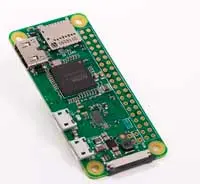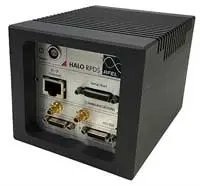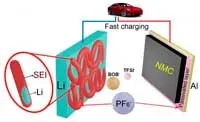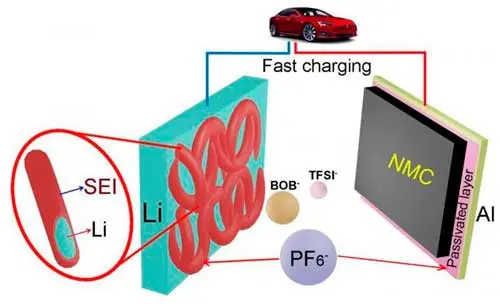Electronics News
Archive : 4 March 2017 год
 Five years since the Raspberry Pi burst on to the scene, the Raspberry Pi Foundation has launched Raspberry Pi Zero W. The wireless LAN enabled version of the Raspberry Pi Zero will cost just $10.
Five years since the Raspberry Pi burst on to the scene, the Raspberry Pi Foundation has launched Raspberry Pi Zero W. The wireless LAN enabled version of the Raspberry Pi Zero will cost just $10.
While Raspberry Pi Zero has found many applications, the lack of wireless connectivity meant the use of dongles or a USB hub. Zero W is said to overcome this by integrating the Cypress CYW43438 wireless chip found in the Raspberry Pi 3 Model B. With this, the Pi Zero W supports IEEE802.11n wireless LAN and Bluetooth 4.0 connectivity.
Alongside a 1GHz single core CPU and 512Mbyte of RAM, the board comes with a Mini-HDMI port, a Micro-USB On-The-Go port, Micro-USB power and a HAT-compatible 40-pin header.
Eben Upton, chief executive of Raspberry Pi Trading, said: “We imagine you’ll find all sorts of uses for Zero W. It makes a better general purpose computer because you’re less likely to need a hub: if you’re using Bluetooth peripherals, you might well end up with nothing at all plugged into the USB port. And of course it’s a great platform for experimenting with IoT applications.”
Author
Graham Pitcher
Source: www.newelectronics.co.uk
 The Defence Science and Technology Laboratory (DSTL) has taken delivery of two HALO Rapid Prototype Development Systems from RFEL. The systems will be used to evaluate video processing algorithms from RFEL and third parties and to support interactive demonstrations to military users.
The Defence Science and Technology Laboratory (DSTL) has taken delivery of two HALO Rapid Prototype Development Systems from RFEL. The systems will be used to evaluate video processing algorithms from RFEL and third parties and to support interactive demonstrations to military users.
The two systems delivered to DSTL support different video processing investigations. One is being used to evaluate RFEL’s suite of high definition video stabilisation products, while the other is being used to evaluate third party algorithms and their performance.
According to RFEL, traditional approaches require prohibitively long simulation times, adding the latest approach – which uses an SoC based approach – will allow algorithms to be tested in hardware.
Dr Alex Kuhrt, RFEL’s CEO, said: “We have been working with DSTL to provide solutions that outperform commercial off the shelf products. It is one of the many military, government and security organisations around the world that come to us for solutions that set new standards for video processing performance.”
Author
Graham Pitcher
Source: www.newelectronics.co.uk
 Researchers are increasing their efforts to improve the performance of batteries, particularly those intended for use in consumer electronics devices, with a number of teams reporting ‘significant’ developments.
Researchers are increasing their efforts to improve the performance of batteries, particularly those intended for use in consumer electronics devices, with a number of teams reporting ‘significant’ developments.
Now, scientists from the US Pacific Northwest National Laboratory (PNNL) say the addition of a ‘pinch of something new’ to a battery’s electrolyte can enable more energy to be stored.
Early stage research is said to show that a small amount of lithium hexafluorophosphate (LiPF6)in a dual salt, carbonate solvent-based electrolyte can make rechargeable lithium-metal batteries stable, charge quickly and have a high voltage.
“A good lithium-metal battery will have the same lifespan as the lithium-ion batteries that power today’s electric cars and consumer electric devices, but also store more energy,” said PNNL chemist Wu Xu.
When lithium-based rechargeable batteries were first developed in the 1970s, researchers used metallic lithium for the anode because it could store ten times more energy storage capacity than graphite. But problems with dendrites saw early batteries fail. Researchers continue to address this issue by using other materials, using protective layers or electrolyte additives.
PNNL is revisiting an older design, with lithium metal as an anode, looking for a better performing electrolyte. However, researchers found either they could make ‘super-efficient’ batteries which charged very slowly and couldn't work at higher voltages, or a faster-charging battery that was unstable and had low voltages.
But, by adding small amounts of LiPF6 – 0.6% by weight – they created a 4.3V battery that retained more than 97% of its initial charge after 500 repeated charges and discharges, while carrying 1.75mA/cm2. According to the team, the battery takes about one hour to fully charge.
The battery performed well largely because the additive helps create a robust protective layer of carbonate polymers on the battery's lithium anode. This thin layer prevents lithium from being used up in unwanted side reactions, which can kill a battery.

Xu and his team are now working on ways to make rechargeable lithium-metal batteries viable, including improving electrodes, separators and electrolytes. Amongst the next steps are making and testing larger quantities of the electrolyte, improving the efficiency and capacity retention of a lithium-metal battery using the electrolyte, increasing the material loading on the cathode and trying a thinner anode.
Author
Graham Pitcher
Source: www.newelectronics.co.uk

